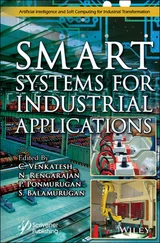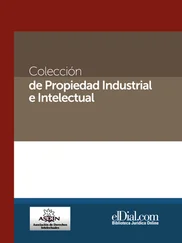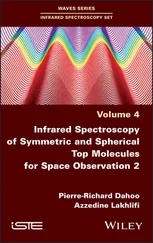11 11 Alizadeh‐Sani, M., Ehsani, A., Kia, E.M., and Khezerlou, A. (2019). Microbial gums: introducing a novel functional component of edible coatings and packaging. Applied Microbiology and Biotechnology 103 (17): 6853–6866.
12 12 Freitas, F., Torres, C.A., and Reis, M.A. (2017). Engineering aspects of microbial exopolysaccharide production. Bioresource Technology 245: 1674–1683.
13 13 Suresh Kumar, A., Mody, K., and Jha, B. (2007). Bacterial exopolysaccharides–a perception. Journal of Basic Microbiology 47 (2): 103–117.
14 14 Gupta, P.L., Rajput, M., Oza, T. et al. (2019). Eminence of microbial products in cosmetic industry. Natural Products and Bioprospecting: 1–12.
15 15 Łopaciuk, A. and Łoboda, M. (2013). Global beauty industry trends in the 21st century. Management, Knowledge and Learning International Conference, 19–21 June 2013, Zadar, Croatia, pp. 19–21.
16 16 Watanabe, K. (2001). Microorganisms relevant to bioremediation. Current Opinion in Biotechnology 12 (3): 237–241.
17 17 Beattie, A.J., Hay, M., Magnusson, B. et al. (2011). Ecology and bioprospecting. Austral Ecology 36 (3): 341–356.
18 18 Allen, R.M. and Bennetto, H.P. (1993). Microbial fuel‐cells: electricity production from carbohydrates. Applied Biochemistry and Biotechnology 39: 27–40.
19 19 Logan, B.E., Hamelers, B., Rozendal, R. et al. (2006). Microbial fuel cells: methodology and technology. Environmental Science & Technology 40: 5181–5192.
20 20 Karamanlioglu, M., Preziosi, R., and Robson, G.D. (2017). Abiotic and biotic environmental degradation of the bioplastic polymer poly (lactic acid): a review. Polymer Degradation and Stability 137: 122–130.
21 21 Khan, M.I., Shin, J.H., and Kim, J.D. (2018). The promising future of microalgae: current status, challenges, and optimization of a sustainable and renewable industry for biofuels, feed, and other products. Microbial Cell Factories 17 (1): 36.
22 22 Nabgan, W., Abdullah, T.A.T., Mat, R. et al. (2017). Renewable hydrogen production from bio‐oil derivative via catalytic steam reforming: An overview. Renewable and Sustainable Energy Reviews 79: 347–357.
23 23 Patel, S., Kaushal, G., and Singh, S.P. (2020). A novel D‐Allulose 3‐epimerase gene from the metagenome of a thermal aquatic habitat and D‐Allulose production by Bacillus subtilis whole‐cell catalysis. Applied and Environmental Microbiology 86 (05): e02605–e02619.
24 24 Agarwal, N., Narnoliya, L.K., and Singh, S.P. (2019). Characterization of a novel amylosucrase gene from the metagenome of a thermal aquatic habitat, and its use in turanose production from sucrose biomass. Enzyme and Microbial Technology 131: 109372.
25 25 Lata, K., Sharma, M., Patel, S.N. et al. (2018). An integrated bio‐process for production of functional biomolecules utilizing raw and by‐products from dairy and sugarcane industries. Bioprocess and Biosystems Engineering 41 (8): 1121–1131.
26 26 Granström, T.B., Takata, G., Tokuda, M., and Izumori, K. (2004). Izumoring: a novel and complete strategy for bioproduction of rare sugars. Journal of Bioscience and Bioengineering 97 (2): 89–94.
27 27 Singh, S.P., Jadaun, J.S., Narnoliya, L.K., and Pandey, A. (2017). Prebiotic oligosaccharides: special focus on fructooligosaccharides, its biosynthesis and bioactivity. Applied Biochemistry and Biotechnology 183 (2): 613–635.
28 28 Kanchiswamy, C., Malnoy, M., and Maffei, M. (2015). Bioprospecting bacterial and fungal volatiles for sustainable agriculture. Trends in Plant Science 20 (4): 206–211.
29 29 Omura, S. (2008). Ivermectin: 25 years and still going strong. International Journal of Antimicrobial Agents 31 (2): 91–98.
30 30 Omura, S. (2016). A splendid gift from the Earth: the origins and impact of the avermectins (Nobel lecture). Angewandte Chemie International Edition 55 (35): 10190–10209.
31 31 Karpinski, T.M. and Adamczak, A. (2018). Anticancer activity of bacterial proteins and peptides. Pharmaceutics 10 (2): 54.
32 32 Sedighi, M., Zahedi Bialvaei, A., Hamblin, M.R. et al. (2019). Therapeutic bacteria to combat cancer; current advances, challenges, and opportunities. Cancer Medicine 8 (6): 3167–3181.
2 Application of Microorganisms in Biosurfactant Production
Lorena Pedraza-Segura1, Luis V. Rodríguez-Durán2, Gerardo Saucedo-Castañeda3, and José de Jesús Cázares-Marinero4
1 Department of Chemical, Industrial and Food Engineering, Universidad Iberoamericana, Mexico City, Mexico
2 Multidisciplinary Academic Unit Mante, Universidad Autónoma de Tamaulipas, Tamaulipas, México
3 Biotechnology Department, Universidad Autónoma Metropolitana-Iztapalapa, Mexico City, Mexico
4 Department of Research & Development, Polioles, S.A. de C.V, Mexico
2.1 Biosurfactants Nature and Classification
Biosurfactants (BS) are amphiphilic molecules that, as any surfactant, consist in two contrasting moieties: (i) one hydrophilic part showing affinity to polar substances like water, and (ii) one lipophilic displaying attraction to non‐polar media such as oil and fats ( Figure 2.1) [1]. The prefix “bio” refers to the fact that these surfactants are exclusively produced through biochemical transformations within microorganisms under certain conditions; this is why BS are also called microbial surfactants [2]. The adjustable binary hydrophilic–lipophilic feature confers surfactants appealing properties for applications in all types of industrial sectors.
Surfactants can be categorized according to their (i) origin, (ii) electrostatic status, and (iii) the ratio of their hydrophilic and lipophilic components ( Table 2.1). In the first category, surfactants can be seen as synthetic, semi‐synthetic, and BS. Synthetic surfactants are those that have been manufactured on a large scale for many years from raw materials of petrochemical origin. Semi‐synthetic surfactants were introduced to the market to offer less hazardous alternatives to conventional surfactants. These are constituted by lipophilic fragments coming from biocompatible motifs like fatty esters, acids, or alcohols extracted from natural oils ( oleum ), ergo these surfactants are also called oleochemical surfactants. Nevertheless, further steps of conventional synthesis are always required to afford finished products (semi‐synthetic = half‐synthetic). Currently, it is estimated that >27% of consumed surfactants are oleochemicals. Europe and North America have dominated this particular market, and the increased consumption in recent years can be associated with the interest in products for personal care, home care, and agriculture.
In an attempt to solve relevant drawbacks related to low biodegradability profiles of synthetic surfactants, pollution of traditional chemical processes, and sacrifice of natural resources, new sustainable approaches have recently emerged, implying biotechnological means for surfactant obtention. In this context, BS are known to be secondary metabolites of living organisms just as bacteria and yeast and to be involved in some microbial physiological functions, e.g. cell development, biofilm formation, and osmotic pressure regulation. Furthermore, these play a key role in microbial survival in front of adverse situations such as lack of nutrients and the need to incorporate non‐soluble substances like hydrocarbons as the only carbon source [2]. These natural phenomena have been exploited by bioengineering in productive microbial fermentation, and since BS are achieved through complex enzymatic reactions, such biomolecules are endowed of robust chemical architectures, which are tunable from elegant processes of molecular biology, genetic engineering, or careful selection of culture conditions.
Читать дальше











